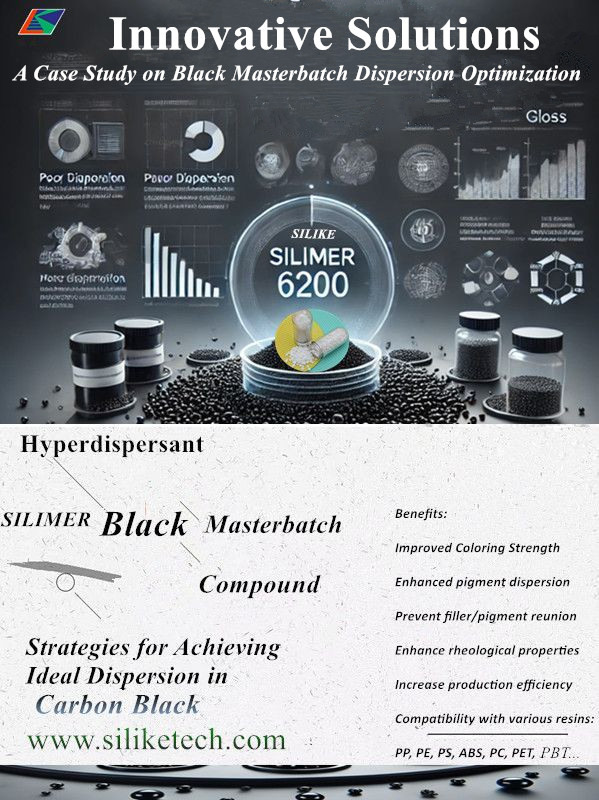Black masterbatch is a vital component across multiple industries, including synthetic fibers (such as carpets, polyester, and non-woven fabrics), blown film products (like packaging bags and cast films), blow-molded products (such as pharmaceutical and cosmetic containers), extruded products (including sheets, pipes, and cables), and injection-molded products (such as automotive parts and electrical appliances). Its advantages—ease of use, no pollution, consistent coloring, improved plastic part quality, and compatibility with automated production systems—make it indispensable. Additionally, black masterbatch can integrate various additives, enhancing its functionality and convenience.
Common Questions and Key Factors of Black Masterbatches
The key components of black masterbatch include carbon black, carbon black carrier, carbon black wetting agent, carbon black dispersant, and other processing aids. Manufacturers often encounter significant challenges in black masterbatch production. Issues such as low pigment concentration, contamination during dyeing, poor dispersion of carbon black, and inadequate blackness and gloss can affect the final product’s quality. These problems lead to inconsistent coloration, reduced material properties, and processing difficulties.
Case Study: Addressing Dispersion Issues in Black Masterbatch Production
Some black masterbatch manufacturers faced a critical issue. Their formulation, containing 40% carbon black and utilizing EVA wax as a dispersant, showed inconsistent physical properties during extrusion. Some extruded strands were brittle, while others were unusually tough, despite using a twin-screw extruder and maintaining controlled temperatures between 160°C and 180°C. What caused the issue? This inconsistency points to a common problem in black masterbatch production: the non-uniform dispersion of carbon black.
What Is the Best Way to Solve Pigment Black Dispersion? Understanding Carbon Black Dispersion
Carbon black, a fine powder used for pigmentation and reinforcement, poses a dispersion challenge due to its high surface area and tendency to agglomerate. Achieving uniform dispersion within the polymer matrix is essential for maintaining product quality. Non-uniform dispersion can lead to streaks, spots, uneven coloration, and inconsistencies in physical properties (such as brittleness or unusual toughness).
Innovative Solutions for Achieving Uniform Dispersion in Black Masterbatch Production: Introducing SILIKE’s SILIMER 6200:A Proven Hyperdispersant
Hyperdispersant SILIMER 6200 is specifically designed to address the challenges of pigment black and carbon black dispersion, improving uniformity and enhancing the overall quality of the final product.
Benefits:
- Enhanced Pigment Dispersion: Hyperdispersant SILIMER 6200 improves the dispersion of carbon black, ensuring consistent coloration.
- Improved Coloring Strength: Hyperdispersant SILIMER 6200 increases the effectiveness of carbon black in achieving desired shades.
- Prevention of Filler and Pigment Reunion: Hyperdispersant SILIMER 6200 helps maintain uniformity by preventing the agglomeration of pigments.
- Better Rheological Properties: Hyperdispersant SILIMER 6200 enhances the flow characteristics of the masterbatch, facilitating processing.
- Increased Production Efficiency, Lowering Costs: Hyperdispersant SILIMER 6200 contributes to a more efficient manufacturing process.
Hyperdispersant SILIMER 6200 is compatible with a wide range of resins, including PP, PE, PS, ABS, PC, PET, PBT, and more, making it an ideal choice for a broad spectrum of applications in masterbatches and compounds.
Don’t let dispersion issues compromise your black masterbatch product quality. Email us at amy.wang@silike.cn to learn more about how SILIKE’s Hyperdispersant SILIMER 6200 can help you achieve consistent results and meet the diverse needs of your masterbatches and compounds industry.
Post time: Nov-19-2024






